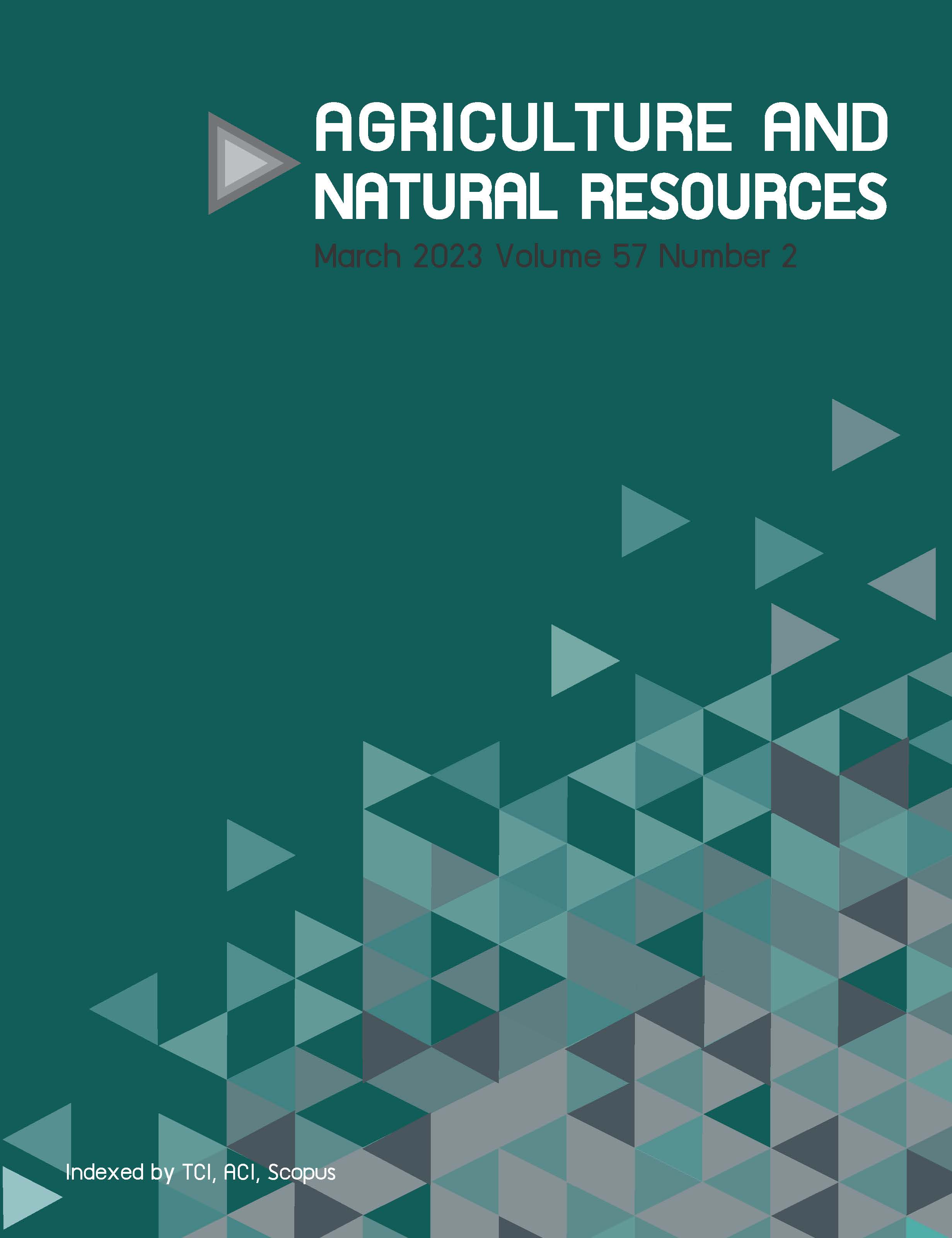Genotype performance and relationship between leaf traits, biomass yield and wood quality on interspecific hybrids of Jatropha
Keywords:
Chlorophyll content, Chemical composition, Pruning tolerance, Regrowth, Woody plantAbstract
Importance of the work: Pruning tolerance of fast-growing trees is critical for biomass energy crop cultivation. Leaf traits might be used to identify Jatropha genotypes with high biomass yields.
Objectives: To evaluate the effects of pruning and performance of genotypes for leaf traits, biomass yield and wood quality in interspecific hybrids between Jatropha curcas and J. integerrima, as well as the relationships among these traits.
Materials & Methods: In total, 16 Jatropha genotypes were planted in the field for 2 yr and pruned each year for biomass harvesting. Leaf traits, biomass yield, wood quality, chemical composition, and calorific value of wood were all assessed.
Results: After pruning, there was no significant reduction in the overall biomass yield and leaf traits, such as leaf size, average leaf weight, specific leaf area (SLA) and SPAD chlorophyll meter reading (SCMR). Furthermore, the hemicellulose and ash contents, moisture, density and calorific value of Jatropha genotype wood were not reduced. Leaf traits, biomass yield and wood quality of a Jatropha genotype showed significant genotype variation. Interspecific hybrids KUBJL 1, KUBJL 3, KUBJL 4, KUBJL 6, KUBJL 11, and KUBJL 13 showed improved leaf traits after pruning. Pruning had no effect on the chemical composition of KUBJL 2, KUBJL 3, KUBJL 8, KUBJL 10, KUBJL 5, KUBJL 11, KUBJL 12, and KUBJL 14. Moreover, KUBJL 5, KUBJL 11, KUBJL 5, KUBJL 4, and KUBJL 2 had the highest pruning tolerance index (PTI), with fresh weight PTIs of 106.25%, 104.07%, 98.27%, and 94.57%, respectively. There were significant and highly significant correlations between biomass yield and leaf size (Pearson’s coefficient [r] = -0.57 [p < 0.05] to -0.75 [p < 0.01]), average leaf weight (r = -0.58 [p < 0.05] to -0.74 [p < 0.01]), and SCMR (r = 0.64 [p < 0.05] to 0.79 [p < 0.01]). Wood calorific value was also related to leaf moisture content (r = -0.33 ns to -0.69 [p < 0.01]), wood moisture content (r = -0.73 [p < 0.01] to -0.77 [p < 0.01]), wood density (r = 0.25ns to 0.75 [p < 0.01]), lignin (r = 0.71 [p < 0.01] to 0.74 [p < 0.01]) and ash (r = -0.73 [p < 0.01] to -0.82 [p < 0.01]).
Main finding: These traits could be used to select Jatropha hybrids with high biomass yield and heat value. Furthermore, Jatropha interspecific hybrids with pruning tolerance could be selected from this study.
Downloads
Published
How to Cite
Issue
Section
License
Copyright (c) 2023 Kasetsart Universityonline 2452-316X print 2468-1458/Copyright © 2022. This is an open access article under the CC BY-NC-ND license (http://creativecommons.org/licenses/by-nc-nd/4.0/),
production and hosting by Kasetsart University of Research and Development Institute on behalf of Kasetsart University.







